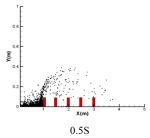EPJ E Highlight - Greater desertification control using sand trap simulations
- Details
- Published on 25 September 2013

A new simulation will help improve artificial sand-control measures designed to help combat desertification by identifying their weaknesses
In the fight against desertification, so-called straw checkerboard barriers (SCB), consisting of half -exposed criss-crossing rows of straw of wheat, rice, reeds, and other plants, play a significant role. The trouble is that our understanding of the laws governing wind-sand movement in SCB and their surrounding area is insufficient. Now, Ning Huang and colleagues from Lanzhou University in China, have performed a numerical simulation of the sand movement inside the SCB, described in a paper just published in EPJ E. Their country is particularly affected by desertification, which affects 18% of its territory. The results will help us to understand sand fixation mechanisms that are relevant for sandstorm and land-desertification control.
The authors relied on a simulation of large eddies, which are circulations around an obstruction such as the SCB walls, to study the turbulence stress. They also used a discrete particle-tracing method to numerically simulate the wind sand movement inside the SCB. Specifically, they described the sand as a gas, using equations to describe their space-averaged hydrodynamics. They also analysed in detail the movement characteristics of sand particles, the transverse velocities of sand particles and wind-sand flow within the SCB using a model taking into consideration the coupling effects of wind field and sand particles.
Huang and colleagues found that the SCB contributed to a decrease in the sand transport rate in its interior, thus helping the sand fixation. What is more, as the transverse distance increases, the strength of wind-sand flow eddies decreases. Meanwhile, the sand accumulates near the interior walls of the SCB. Finally, as the number of SCBs increases, the wind is less able to transport sand.
Future studies will be designed to optimise SCB design, based on the authors’ theoretical analysis. These findings could also be used to study the evolution to sand dunes.
Numerical Simulation of Wind-sand Movement in Straw Checkerboard Barriers. N. Huang, X. Xia, D. Tong (2013), European Physical Journal E 36: 99, DOI 10.1140/epje/i2013-13099-6




